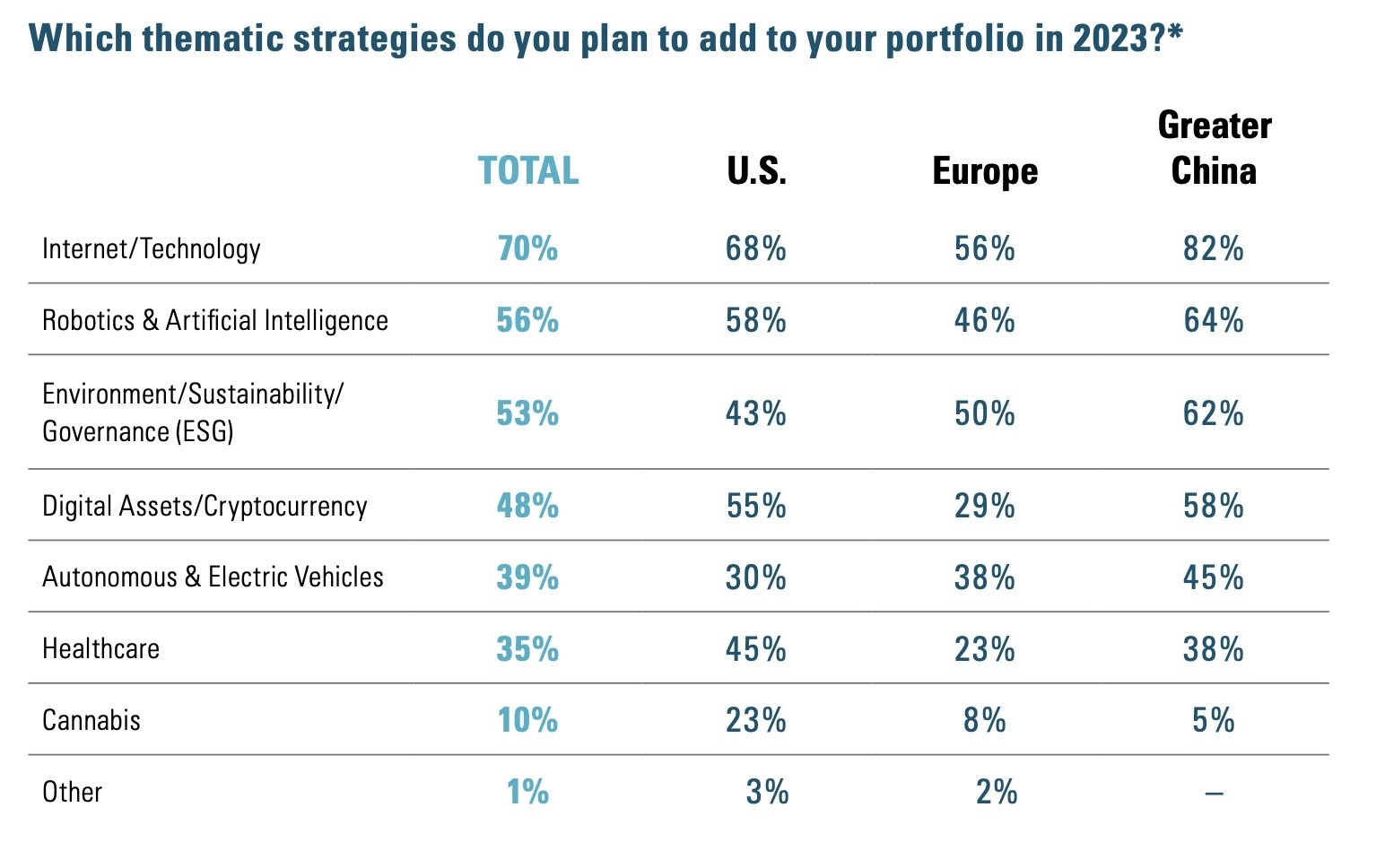Institutional Interest in Crypto ETFs Cooled but Not Gone, Survey Says

Crypto’s roller coaster year has not significantly discouraged institutions from getting involved in the space via regulated fund structures, a survey found.
Overall, 48% of institutions surveyed plan to add crypto-related ETFs to their portfolios in 2023, according to a report by the boutique investment bank Brown Brothers Harriman & Co. This figure stood at 54% a year ago, a decline of six percentage points.
A quarter of respondents already allocating to such funds said they expect to up their exposure this year — a drop from 33% last year.
“Initiatives such as the draft regulation from the EU’s Markets in Crypto Assets proposal [are] expected to significantly derisk investments in crypto assets for asset managers and provide an additional layer of comfort for fund managers to engage with crypto exchanges,” the report said.
The findings reflect responses from 325 ETF-focused institutional investors, financial advisers and fund managers. About 40% of them manage more than $1 billion in assets.
The report comes after a study by crypto asset manager Bitwise Investments found about 80% of advisers with a crypto allocation in client accounts plan to maintain or increase those tickets this year.
Crypto ETF landscape
Interest from institutions in adding crypto ETFs to portfolios in 2023 was higher in the US (55%) and China (58%) than it was in Europe (29%).

US fund issuers have not yet gotten approval from the SEC to launch a fund that holds bitcoin directly — a spot BTC ETF. Grayscale is currently tied up in a lawsuit with the regulator after it denied the firm’s proposal to convert its Bitcoin Trust (GBTC) to an ETF.
Bitwise’s January survey found that most advisers looking to boost crypto exposure for clients plan to use equity ETFs. The largest is Amplify Investments’ Transformational Data Sharing ETF (BLOK), which has about $440 million in assets.
Another option: bitcoin futures ETFs, which first hit US markets in October 2021. The largest is ProShares’ Bitcoin Strategy ETF (BITO), which now has about $940 million in assets.
While BITO and other similar ETFs invest in front-month CME bitcoin futures contracts, Bitwise last month launched its Bitcoin Strategy Optimum Roll ETF (BITC). It’s designed to select futures contracts with the lowest level of contango.
Contango, broadly speaking, is when the projected price of a commodity under a futures contract is valued above the asset’s going spot price.
The company is hoping its differentiated strategy appeals to a certain type of investor, Bitwise Chief Investment Officer Matt Hougan told Blockworks.
“What you see usually is that traders migrate to the front-month-oriented products and investors migrate to the optimum rolls products, because academic history suggests that delivers better long-term return in most cases,” Hougan said.
Despite the difference in strategy, according to Hougan, being late to the bitcoin futures ETF landscape could still make for “a long road” to win significant assets.
The Bitwise executive said the firm, which had its spot bitcoin ETF proposal rejected last June, would likely try to bring a spot bitcoin ETF to market again once more regulatory clarity comes to light.
“Long-term, we think a spot bitcoin ETF would be a wonderful thing for investors, a wonderful thing for the crypto market,” he said. “We’re already seeing in Canada, in Germany, in Sweden, in Brazil that they work well.”






 Bitcoin
Bitcoin  Ethereum
Ethereum  Tether
Tether  USDC
USDC  TRON
TRON  Dogecoin
Dogecoin  Cardano
Cardano  Bitcoin Cash
Bitcoin Cash  LEO Token
LEO Token  Chainlink
Chainlink  Stellar
Stellar  Litecoin
Litecoin  Hedera
Hedera  Monero
Monero  Dai
Dai  OKB
OKB  Cronos
Cronos  Ethereum Classic
Ethereum Classic  Gate
Gate  Cosmos Hub
Cosmos Hub  VeChain
VeChain  Algorand
Algorand  KuCoin
KuCoin  Tether Gold
Tether Gold  Stacks
Stacks  Zcash
Zcash  Theta Network
Theta Network  IOTA
IOTA  Tezos
Tezos  TrueUSD
TrueUSD  NEO
NEO  Polygon
Polygon  Decred
Decred  Ravencoin
Ravencoin  Dash
Dash  Zilliqa
Zilliqa  Qtum
Qtum  Synthetix Network
Synthetix Network  0x Protocol
0x Protocol  Basic Attention
Basic Attention  Siacoin
Siacoin  Holo
Holo  DigiByte
DigiByte  Status
Status  Nano
Nano  Enjin Coin
Enjin Coin  Ontology
Ontology  Waves
Waves  Hive
Hive  Pax Dollar
Pax Dollar  Lisk
Lisk  Steem
Steem  BUSD
BUSD  Numeraire
Numeraire  NEM
NEM  Huobi
Huobi  OMG Network
OMG Network  Bitcoin Gold
Bitcoin Gold  Ren
Ren  Augur
Augur  HUSD
HUSD  Bitcoin Diamond
Bitcoin Diamond